Table of Contents
The Begonia may be your best option if you’re seeking a low-maintenance plant to brighten up your home. The vivid and vibrant blooms of Begonias make them a favourite interior and outdoor plant. With proper care, begonias can thrive all year long. It’s understandable why this plant is a favourite amongst gardeners and plant enthusiasts with its colourful flowers and bright leaves. However, if you don’t know what you’re doing, caring for a Begonia plant might be challenging.
In order to assist you while maintaining your plant’s health and keep it blooming throughout the year, we’ve compiled this begonia plant guide. Everything you require to know to make sure your Begonias are flourishing is covered, from watering and fertilizing to pruning and repotting.
The following advice is designed to keep your begonia plant strong and in bloom.
Essentials To Keep Your Begonia Healthy
- Lighting: Begonias need bright, indirect sunlight to grow and bloom. Too much direct sunlight can burn the leaves, while too little can cause the plant to grow tall and leggy without producing blooms. Place your begonia in a spot with bright, filtered light.
- Watering: Begonias like to be kept consistently moist but not soggy. When the topmost centimetres of soil seem dry when touched, water the plant. Directly water the soil, avoiding the leaves, and let any extra water drip out of the pot’s bottom. Allowing the soil to dry out slightly between waterings will prevent root rot, which can be caused by overwatering.
- Soil: Begonias prefer well-draining soil that is rich in organic matter. A good potting mix for begonias should contain peat moss, perlite, and vermiculite.
- Fertilizing: During the growing season, begonias thrive with regular fertilization. Use an appropriate amount of fertilizer once every couple of months in the autumn and winter and once a month in the summer and spring months.
- Humidity: Begonias thrive in high-humidity environments. If the air in your home is dry, consider using a humidifier or placing a tray of water near the plant to increase humidity.
- Pruning: Regular pruning can help to promote bushy growth and prevent “legginess”. Pinch back the stems and remove any dead or yellowing leaves as needed. You can maintain your begonia plant thriving and flowering all year long by sticking to these straightforward instructions. Your begonia will thank you with lovely blooms as well as lush growth if you give it a little love and care.
The Different Types of Begonias
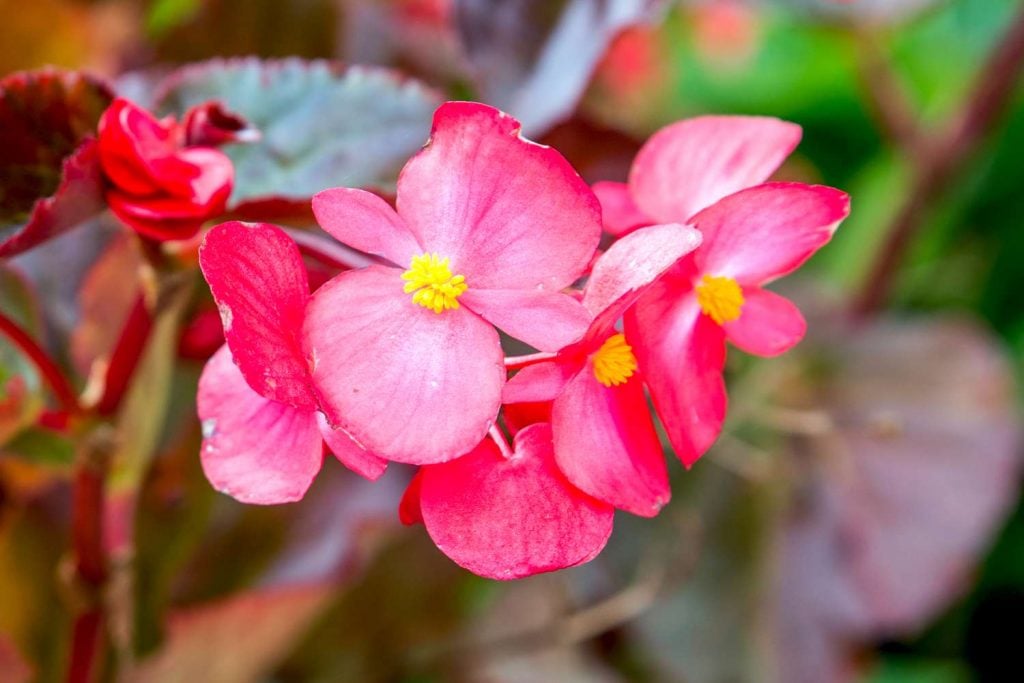
A diversified genus of plants, begonias are available in a wide range of colours, proportions, and styles. Begonias come in over 1,800 species, and they may be further divided into a number of groupings according to how they grow and what kind of flowers they produce.
1. Fibrous-Rooted Begonias
These Begonia varieties are among the most common and are frequently cultivated as houseplants. They produce clusters of tiny, pink, red, or white blooms with fleshy, little leaves.
2. Rhizomatous Begonias
These Begonias have thick, fleshy stems that grow horizontally across the soil. They have larger leaves than fibrous-rooted Begonias and produce larger, more showy flowers.
3. Tuberous Begonias
These are the most popular Begonias for outdoor gardens. They have large, showy flowers in shades of pink, red, orange, and yellow, and their leaves are often variegated or have interesting patterns.
4. Semperflorens Begonias
Also known as Wax Begonias, these plants have glossy leaves and produce clusters of small flowers in shades of pink, red, or white. They are often grown as annuals in outdoor gardens.
Knowing which type of Begonia you have is important for proper care and maintenance. Different types of Begonias have different water and light requirements, so it’s important to understand their individual needs.
Optimal Growing Conditions for Begonias
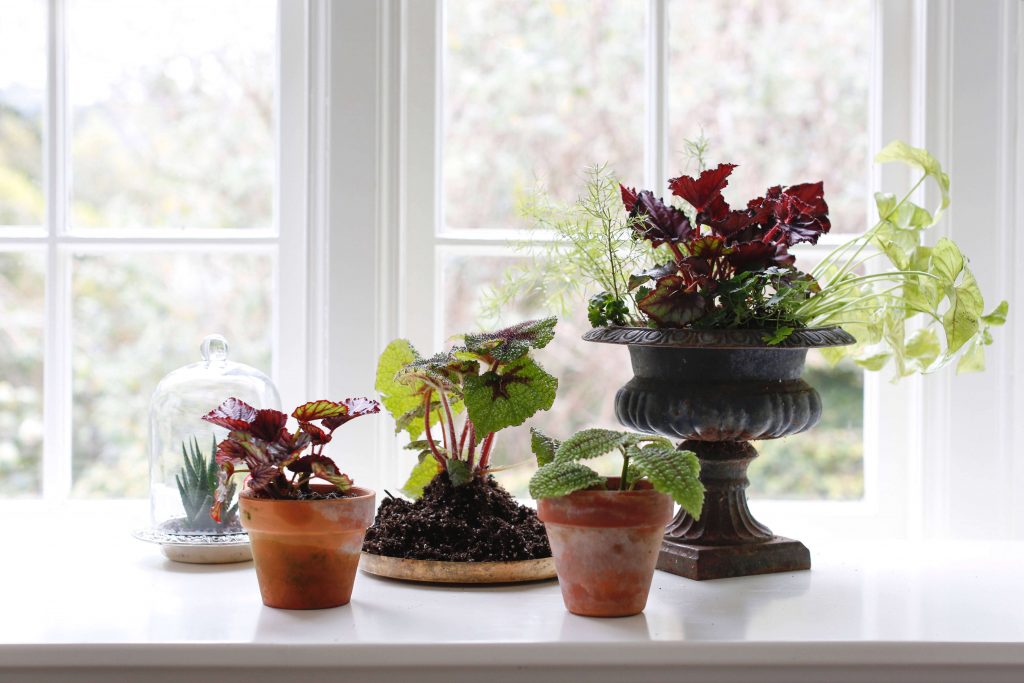
Begonias enjoy warm, humid conditions with filtered or indirect light because they’re native to tropical and subtropical locations. Depending on the variety of Begonia and the environment where you live, they may be grown either indoors or outdoors.
- Light: Most Begonias prefer bright, indirect light, but they can also tolerate partial shade. Placing them in direct sunlight can be harmful to their leaves as the leaves may get scorched due to direct sunlight.
- Temperature: Begonias prefer warm temperatures between 65°F and 75°F. They can tolerate slightly cooler temperatures, but they should not be exposed to temperatures below 50°F.
- Humidity: Begonias prefer high humidity levels between 50% and 60%. Place a humidifier or tray of water next to your plant to boost the humidity there. Your plant will benefit greatly from utilizing a humidifier or tray of water.
- Soil: Begonias prefer well-draining soil that is rich in organic matter. A soil mix that contains peat moss and perlite is ideal for Begonias.
- Water: Begonias prefer moist soil but can be susceptible to root rot if overwatered. Water your Begonia when the top inch of the soil feels dry to the touch.
By providing your Begonia with optimal growing conditions, you can help it thrive and produce beautiful blooms.
Watering and Fertilizing Your Begonia Plant
Proper watering and fertilization are essential for the health and growth of your Begonia plant. Here are some tips for watering and fertilizing your Begonia:
- Watering: Water your Begonia when the top inch of the soil feels dry to the touch. Deeply water the plant and let the extra water run off the bottom of the pot. Avoid overwatering begonias since they are prone to developing root rot.
- Fertilizing: Begonias should be fertilized every 4-6 weeks during the growing season (spring and summer). Use a water-soluble and balanced fertilizer and dilute it by half. When your Begonia is dormant in the wintertime and not actively developing, avoid fertilizing it.
Pruning and Grooming Your Begonia Plant
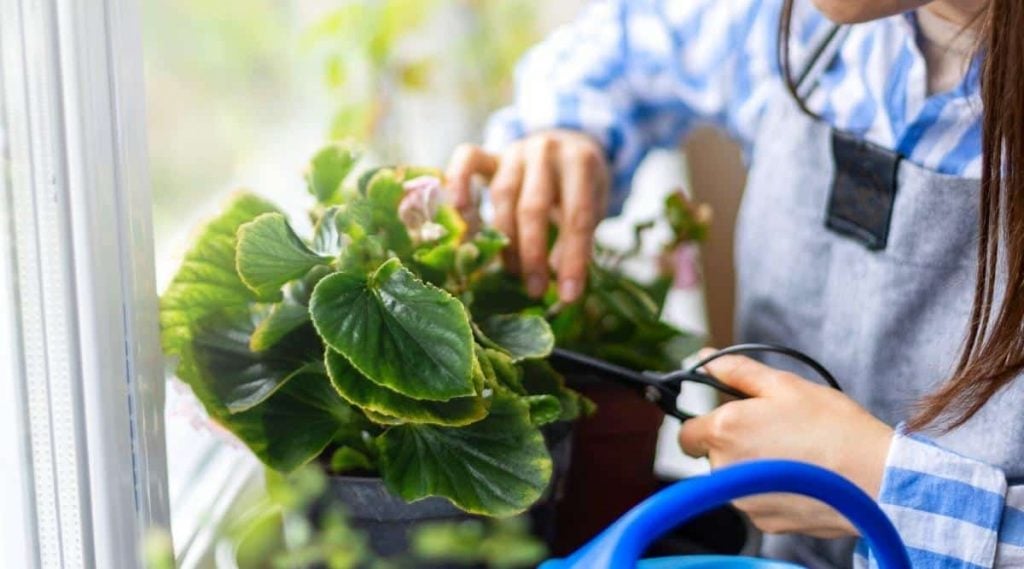
Pruning and grooming your Begonia plant can help promote healthy growth and prevent disease. Here are some tips for pruning and grooming your Begonia:
1. Deadheading
Remove spent blooms from your Begonia regularly to promote new growth and prevent diseases. Deadheading also makes sure that your plant focuses on growing new flowers instead of seed propagation.
2. Pinching
This is a simple and easy trick used by many gardeners to promote new growth. Simply pinch back the tips of your Begonia’s stems; this is helpful in promoting bushy growth and preventing “legginess.”
3. Trimming
Trimming any yellow or diseased leaves helps keep your plant disease free and healthy in the long term. It is common for certain leaves or stems of Begonia to get infected once in a while, an easy way to deal with this issue is to trim the infected part before it spreads further.
By regularly pruning and grooming your Begonia plant, you can help it stay healthy and vibrant.
Common Pests and Diseases for Begonias
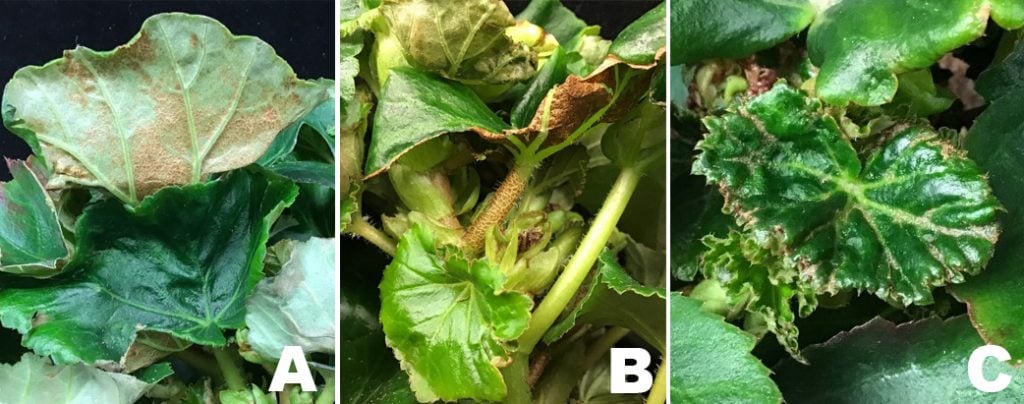
Like all plants, Begonias are susceptible to pests and diseases. Here are some common pests and diseases found in Begonias:
1. Spider Mites
These tiny pests, although part of the arachnid family, have nothing to do with spiders. They stick to your plants and eat their leaves until the plant dies, after which they move to the next plant. Common signs of spider mite infestation include yellowing and stippling on Begonia leaves. You can use a miticide to control spider mites.
2. Mealybugs
Mealybugs are common but annoying pests to deal with. They secret a gel-like substance that attracts ants, which is why ants carry them to plants. They cause stunted growth and yellowing of Begonia leaves. Use insecticidal soap to control mealybugs; you can also use a diluted neem oil spray.
3. Powdery Mildew
Begonia leaves may develop a white, powdery coating as a result of powdery mildew. If you notice the white powder settling against your plant, use a type of fungicide to eradicate the powdery mildew. Even baking soda has been known to be helpful, or you can use Sulphur based insecticide, which is proven to eliminate mildew problems.
By keeping a close eye on your Begonia plants and taking action when symptoms of bugs or disease arise, you can prevent serious damage to them.
Troubleshooting Common Problems with Begonias
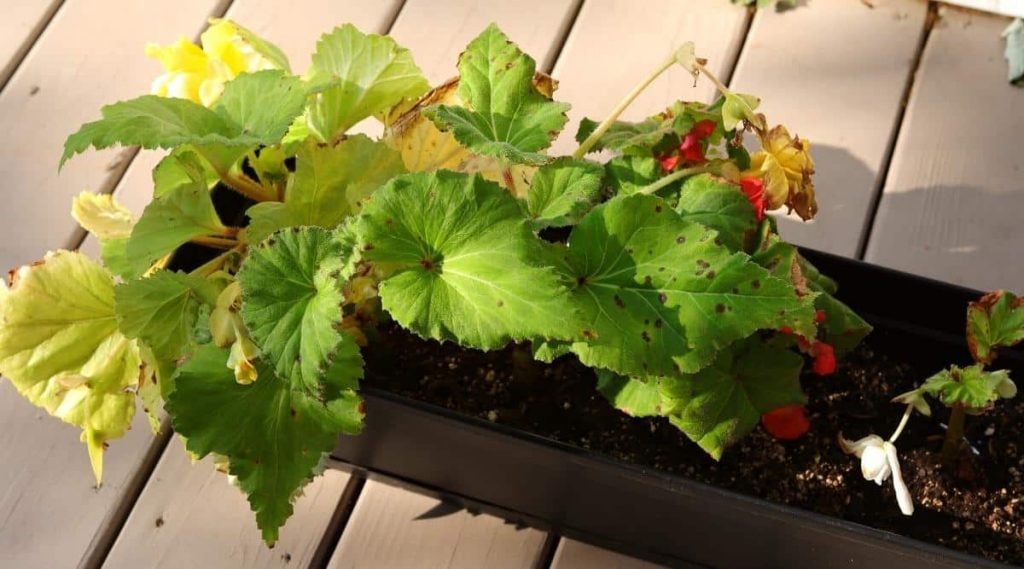
Even with proper care, Begonias can sometimes experience problems. Here are some common problems and their solutions:
1. Yellowing Leaves
Yellowing leaves can be a sign of overwatering or underwatering. Adjust your watering schedule accordingly.
2. Drooping Leaves
Drooping leaves can be a sign of underwatering or exposure to cold temperatures. Water your Begonia and move it to a warmer location.
3. Leggy Growth
Leggy growth can be a sign of low light levels. Move your Begonia to a brighter location or provide supplemental lighting.
By identifying and addressing common problems with Begonias, you can help your plant thrive and produce beautiful blooms.
Propagating Begonia Plants
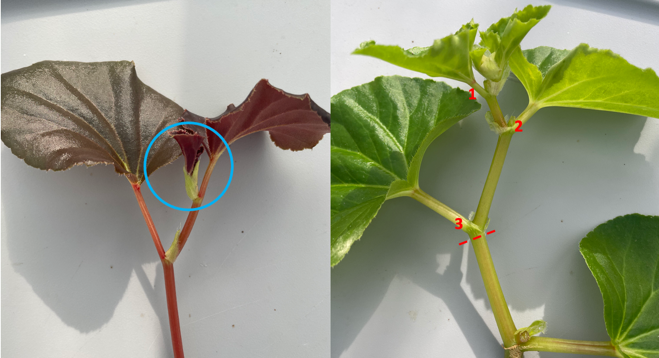
Propagating your Begonia plant is a great way to create more plants and share them with friends and family. Here are some methods for propagating Begonias:
- Stem cuttings: Take a stem cutting from your Begonia and place it in water or soil. After a few weeks, roots will begin to grow, and you can transplant the cutting into a new pot.
- Leaf cuttings: Take a leaf cutting from your Begonia and place it in the soil. After a few weeks, a new plant will begin to grow from the leaf.
By propagating your Begonia plant, you can expand your collection and share the beauty of Begonias with others.
Decorating with Begonias
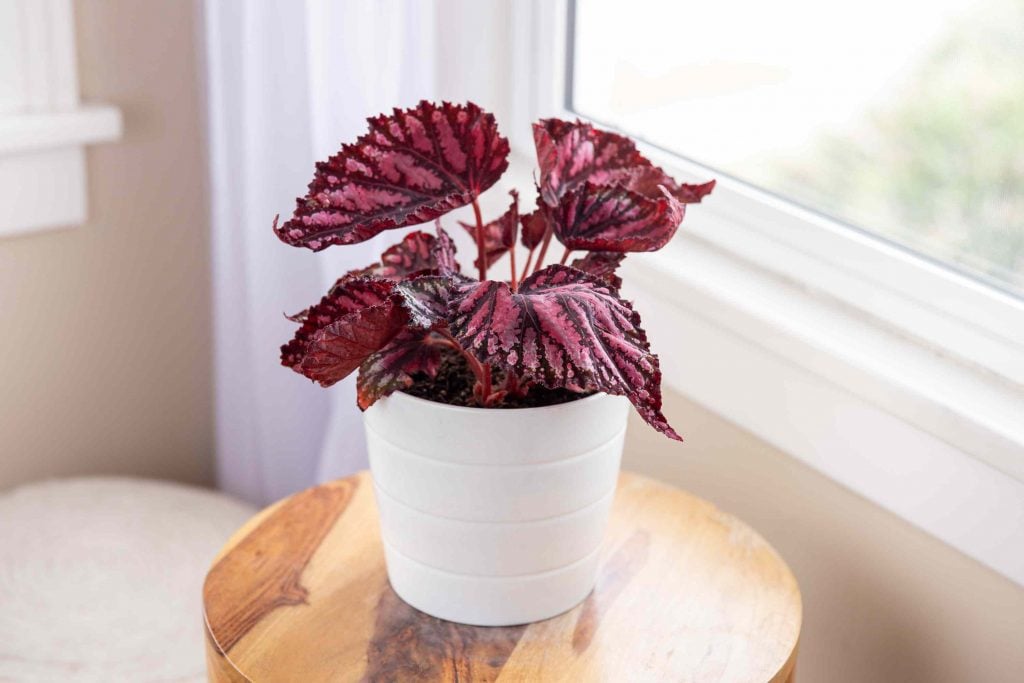
A flexible plant that works well with many different design styles is the begonia. Here are some suggestions for using begonias in decorations:
1. Indoor Decor
Begonias are a great choice for indoor decor. Place them on a windowsill, tabletop, or hanging basket to add a pop of colour to your home.
2. Outdoor Decor
Tuberous Begonias are a great choice for outdoor gardens and can be used in borders, containers, or hanging baskets.
3. Gift Giving
Begonias make a great gift for plant lovers. Choose a variety with colourful blooms and a decorative pot for a thoughtful and beautiful gift.
By incorporating Begonias into your decor, you can enjoy their beauty and vibrant colours all year long.
Final Tips for Begonia Plant Care
A stunning and adaptable plant, begonias can provide colour and beauty to any backyard or home. Your Begonia may flourish and produce lovely blooms throughout the year if you are aware of their specific requirements and give them the right maintenance and care. Keep in mind the following final begonia plant care advice:
- Recognise the kind of begonia you have: It’s crucial to recognise that different varieties of begonias demand varied amounts of water and light
- Provide optimal growing conditions: Begonias prefer warm, humid environments with filtered or indirect light
- Water and fertilize properly: Water your Begonia when the top inch of soil feels dry to the touch, and fertilize every 4-6 weeks during the growing season.
- Prune and groom regularly: Regular pruning and grooming can help promote healthy growth and prevent disease
- Monitor for pests and diseases: Keep an eye out for common pests and diseases and take action at the first sign of trouble.
- Propagate your Begonia: Propagating your Begonia is a great way to create more plants and share them with others.
- Decorate with Begonias: A flexible plant that works well with many different design styles is the begonia.
Following this, you may enjoy your Begonia’s beauty and brilliant colours for years to come, and by emulating these suggestions, you can make sure you get all the best out of your plant. Keep these tips in the back of your mind while taking care of your loved Begonia.

![A Year-Round Guide to Begonia Care and Maintenance [UK] Begonia Plant Care & Growing Tips](https://www.thearches.co.uk/wp-content/uploads/Begonia-Plant-Care-Growing-Tips.jpeg)



